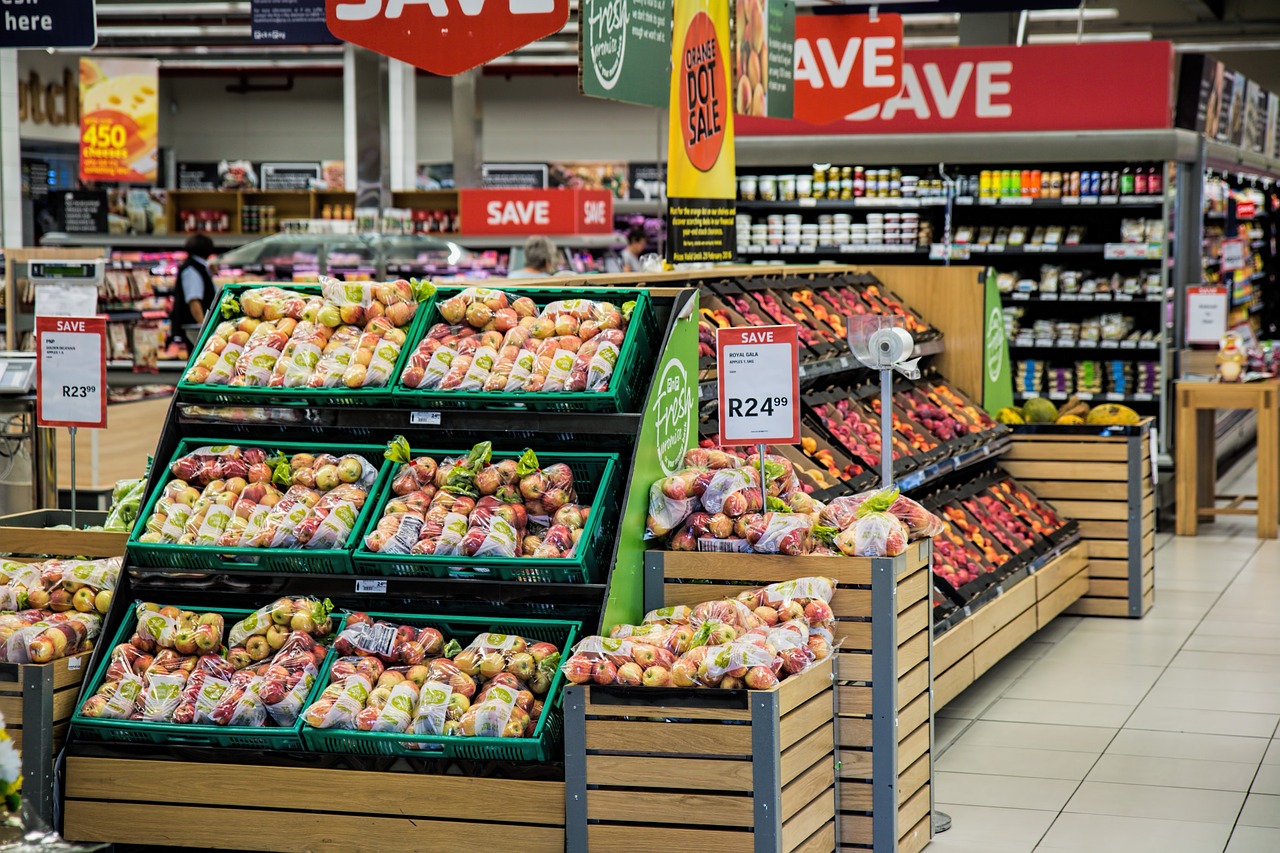Food is a fundamental part of our lives, and as inflation trends impact the cost of groceries, it’s essential to know how to analyze food price inflation and adjust your grocery shopping and meal planning strategies. This comprehensive guide will help you understand the factors affecting food prices, and provide practical tips to ensure you can still enjoy delicious and nutritious meals without breaking the bank.
Section 1: Understanding Food Price Inflation
1.1 What Drives Food Price Inflation?
- Food price inflation is influenced by various factors, including supply and demand, production costs, and global economic conditions. Learn how these factors impact the prices you see at the grocery store.
1.2 Tracking Inflation Data
- Discover how to access and interpret inflation data to stay informed about food price trends in your region.
Section 2: Smart Grocery Shopping Strategies
2.1 Make a Grocery List
- Start by making a well-planned grocery list based on your meal preferences and needs. Avoid impulsive purchases by sticking to the list.
2.2 Set a Budget*
- Determine your monthly or weekly grocery budget and stick to it. This will help you avoid overspending and plan your meals more effectively.
2.3 Buy in Bulk*
- Purchasing non-perishable items in bulk can save you money in the long run. Learn which items are best for bulk purchases and how to store them properly.
2.4 Take Advantage of Sales and Discounts*
- Keep an eye out for sales, promotions, and coupons. Learn how to use them effectively to reduce your grocery bill.
2.5 Shop Seasonally*
- Seasonal produce is often cheaper and fresher. Understand the advantages of buying fruits and vegetables in season.
Section 3: Meal Planning for Savings
3.1 Plan Your Meals*
- Create a weekly meal plan that takes advantage of ingredients you already have, uses similar ingredients across multiple meals, and minimizes food waste.
3.2 Embrace Meatless Meals*
- Incorporate more meatless meals into your plan. Plant-based protein sources like beans and lentils are often more budget-friendly.
3.3 Cooking in Batches*
- Batch cooking and meal prepping not only save time but also money. Learn how to make the most of your meals by cooking in larger quantities.
3.4 Reduce Food Waste*
- Strategies like proper food storage, understanding expiration dates, and using leftovers creatively can help you minimize food waste.
Section 4: Beyond the Grocery Store
4.1 Grow Your Own Produce*
- If space allows, consider starting a small garden or growing herbs on your windowsill. Fresh, home-grown produce can significantly reduce costs.
4.2 Join a Food Co-op or Buying Club*
- Investigate local food cooperatives or buying clubs, where you can purchase fresh, local produce at lower prices.
Navigating food price inflation and maintaining a cost-effective grocery shopping routine is achievable with the right strategies and knowledge. By understanding the driving forces behind food price inflation, shopping smartly, and planning meals efficiently, you can continue to enjoy delicious and nutritious meals without straining your budget. In times of economic change, these skills are invaluable in ensuring food security for you and your family.
Remember that with proper planning, shopping, and meal preparation, you can not only adapt to food price inflation but also improve your overall financial health while savoring satisfying, budget-friendly meals. Happy, cost-effective cooking!
More Money Saving Tips:
1. Track price changes by keeping records of what you buy and the prices you pay. Make sure to pay attention to unit prices (e.g. cost per ounce) as well as regular prices when you’re shopping for groceries. Keeping a shopping list and tracking the price of each product you buy will help you stay organized and find out which items are consistently going up in cost over time.
2. Look for sales, coupons, and promotions in-store and online. By leveraging digital coupon programs, store loyalty programs, or checking online deals websites regularly, it can be easy to find discounts on products that help to offset rising food prices. Further savings can be achieved by shopping at stores that offer everyday low prices or using an app like Ibotta to find rebates on products you already buy and use often.
3. Buy in bulk when it makes sense. When it comes to pantry staples such as flour, sugar, coffee, etc., look for deals where buying in bulk is more economical than buying multiple smaller packages over the course of months at higher unit prices each time. However: only buy in bulk if you know you’ll use it up before it goes bad!
4. Consider switching to generic brands where appropriate. Compare ingredient lists of generics vs name brands and substitute generic products where they are sufficiently similar but often significantly cheaper than name-brand alternatives without sacrificing the quality or taste you love so much (e.g., store-brand peanut butter).
5. Stock up on low-cost staples during times of low inflation (or even deflation). Keeping a small reservoir of items such as canned beans, rice, grains, etc (which have long shelf lives) can enable saving money over time by avoiding having to buy these items during times when food prices are higher due to inflationary pressures or other market factors
FAQs about Analyzing Food Price Inflation and Cost-Effective Grocery Shopping
1. What is food price inflation, and why is it important?
- Food price inflation refers to the increase in the cost of food over time. It’s crucial because it affects your daily expenses and budget, making it essential to understand and manage.
2. How can I track food price inflation in my area?
- You can track food price inflation through government reports, financial news, and websites that provide real-time data on grocery prices in your region.
3. What strategies can I use to set a realistic grocery budget?
- To set a realistic grocery budget, consider your financial situation, track your spending, and prioritize essential food items. This helps you stay on track financially.
4. What are some tips for creating an effective grocery list?
- Creating an effective grocery list involves planning your meals, taking stock of what you already have, and sticking to a budget. This ensures you purchase only what you need.
5. How can I make the most of sales and discounts when grocery shopping?
- To maximize savings, keep an eye on sale flyers, clip coupons, and take advantage of promotions. You can also combine discounts with your grocery list for greater savings.
6. Is buying in bulk always a good idea for cost-effective shopping?
- Buying in bulk is a great way to save money, but it’s essential for non-perishable items that you use frequently. Be mindful of storage and shelf life when buying in bulk.
7. How can I reduce food waste when meal planning?
- To reduce food waste, plan your meals, use leftovers creatively, and ensure proper storage. Understanding expiration dates and practicing portion control can help too.
8. What are some tips for incorporating meatless meals into my diet?
- To incorporate more meatless meals, explore plant-based proteins like beans and lentils. These ingredients are budget-friendly and provide essential nutrients.
9. How can I start growing my own produce at home?
- You can begin growing your own produce by planting a small garden, setting up an herb garden indoors, or growing vegetables in pots. It’s a cost-effective and rewarding option.
10. What is a food cooperative or buying club, and how can I join one?
- A food cooperative or buying club is a community-based initiative where members purchase food together to secure lower prices. To join, research local options and reach out to them.
Tags:
- Food price inflation
- Grocery budget
- Grocery list
- Sales and discounts
- Buying in bulk
- Reducing food waste
- Meatless meals
- Home Gardening
- Food cooperative
- Budget-friendly meals










